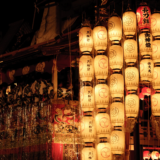The Japanese tea ceremony (known as sadō** or chadō) is more than just a drink;
it is a traditional art form deeply rooted in philosophy and aesthetics.
Through the act of preparing and serving tea, participants experience a sense of calm, etiquette, and the beauty of Japanese culture.
For foreign visitors, participating in a tea ceremony is a fantastic opportunity to gain a deeper understanding of Japan’s rich traditions.
In this article, we will provide a detailed guide to experiencing a Japanese tea ceremony and offer recommendations on how foreigners can participate, as well as suggestions for the best places to enjoy this unique cultural experience.
The Basics and Appeal of the Tea Ceremony

The Japanese tea ceremony, which originated from China in the 15th century and became established during the Edo period, is a traditional ritual in Japan. At the core of the tea ceremony is the concept of “wakeiseijaku” (harmony, respect, purity, and tranquility). These four principles represent the values upheld during the tea ceremony, which is intended to bring peace of mind and a sense of quietude, allowing participants to escape the chaos of modern life.
The appeal of the tea ceremony goes beyond merely drinking matcha (powdered green tea); it lies in the deep philosophy and the spiritual experience behind it. Stepping into a tea room means leaving the distractions of everyday life behind, and immersing oneself in a tranquil atmosphere that fosters inner calm. Through the tea ceremony, participants learn about harmony with nature and respect for others.
In Japan, there are several schools of tea ceremony, each with its unique style and philosophy. The major schools include:
1. Sen no Rikyū School: Founded by the father of the tea ceremony, Sen no Rikyū, this school emphasizes simple yet profound beauty. The concept of “wabicha”—the appreciation of understated elegance—originates here. Wabicha values spiritual richness over material luxury.
2. Urasenke: One of the direct lines of Sen no Rikyū, Urasenke focuses on strict etiquette and rules for the use of tea rooms and utensils. Urasenke places great emphasis on teaching the importance of manners and decorum.
3. Omotesenke: Known for its approachable and open atmosphere, Omotesenke is a good option for beginners. It provides a straightforward introduction to the fundamentals of the tea ceremony.
4. Mushakōji Senke: This school takes a more modern and creative approach, blending tradition with innovation while still respecting the core values of the tea ceremony.
How to Experience the Tea Ceremony: Process and Etiquette
Before participating in a tea ceremony, it is recommended to do the following:
Reservations: Popular tea ceremony experiences often require advance booking. Contact the tea houses or schools offering experiences to secure your spot, especially during tourist seasons or weekends.
Dress Code: While traditional attire is not required, it is best to wear clean, modest clothing. Avoid overly casual outfits like shorts and sandals, and opt for something that covers more skin. Some tea houses offer kimono rentals for a more authentic experience.
Mindset: The tea ceremony requires focus and calm. Approach the experience with an open and relaxed mind, leaving behind the stress of daily life.
The tea ceremony has several important rules and customs, including:
Entering the Room and Greeting: Upon entering the tea room, participants kneel on the tatami mat and bow quietly. This gesture shows respect for the tea space.
Handling Utensils: Participants are expected to handle utensils, such as the tea bowl and whisk, with care. Wash and dry your hands before touching the utensils.
Preparing the Tea: The process of making matcha involves carefully whisking the powdered tea with hot water. The act of preparing tea is done with care and attention, reflecting the beauty of simplicity.
Holding the Tea Bowl: Hold the tea bowl with your right hand supporting the bottom and your left hand gently resting on the side. Before drinking, it is customary to turn the bowl slightly.
Conversation and Food**: The tea ceremony is often accompanied by a simple meal or sweets, and conversation is kept quiet and peaceful. The ceremony emphasizes calm reflection rather than loud or animated discussions.
A typical tea ceremony experience follows this process:
1. Welcome and Introduction: The tea master will explain the basics of the tea ceremony and the flow of the experience, including the meaning behind the ceremony’s steps and values.
2. Entering the Tea Room**: Participants remove their shoes and enter the tea room, bowing at the entrance to show respect.
3. The Tea Ritual: Following the guidance of the tea master, tea is prepared and served. Participants receive and drink the tea with respect and gratitude.
4. Learning About Tea Utensils**: The tea master often explains the significance of the various tools used in the ceremony, such as the tea bowl, whisk, and scoop.
5. Reflection and Gratitude: At the end of the experience, participants express their appreciation to the tea master and reflect on the experience.
1. Kyoto – “Tea Ceremony Experience Chanoan”: A traditional tea house in Kyoto offering a serene tea ceremony experience, with English explanations and guidance for foreign visitors.
2. Tokyo – “Japan Tea Ceremony Center”: A historical tea house in Tokyo where visitors can learn about the customs and enjoy a peaceful tea ceremony.
3. Osaka – “Tea Inn Hamada”: A tea inn that offers not only tea ceremony experiences but also accommodation, making it ideal for those seeking a more immersive experience.
4. Nagoya – “Nagoya Tea Ceremony School”: With beginnerfriendly programs, this school is a great place for foreigners to learn about Japan’s tea culture.
5. Hiroshima – “Hiroshima Tea Ceremony Center”: Known for its comprehensive lessons on both basic and advanced tea ceremony practices, with programs tailored for foreign visitors.
6. Sendai – “Sendai Tea House”: A historical tea house offering a calm environment to experience the beauty of the tea ceremony.
7. Yokohama – “Yokohama Tea Ceremony Experience”: Conveniently located and offering modern yet traditional tea ceremonies, perfect for those with a busy schedule.
Tips for Tea Ceremony Participants
Learn Basic Manners**: Familiarize yourself with basic Japanese etiquette to enhance your experience.
Ask Questions: If you are unsure about something, don’t hesitate to ask the tea master for clarification.
Enjoy the Quiet**: Embrace the peace and quiet of the tea room, as it is essential to the overall experience.
Connect with Others: Share your experience and thoughts with fellow participants, as this can deepen your understanding of the ceremony.
Experiencing a Japanese tea ceremony offers more than just a cup of tea—it provides a spiritual journey. By understanding the basics of tea ceremony etiquette and participating in a formal tea gathering, you can gain a deeper appreciation of Japan’s rich cultural heritage. Each tea ceremony venue across Japan offers its unique charm, making it an excellent opportunity to experience the beauty of this ancient tradition.
 Handn blog
Handn blog 
